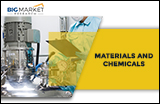
Global Bio-acrylic Acid Market
- MAR2978927
- 178 Pages
- March 2018
- Materials and Chemicals
The formulation of acrylic acid relies heavily on the processing of petrochemicals as the base raw material.A high demand for acrylic acid paired with volatile crude oil prices is leading to the development of renewable alternatives to reduce the dependence of acrylic acid's formulation on gasoline. Due to rising environmental concerns, acrylic acids are now predominantly being produced from renewable carbon sources (such as corn or sugarcane), in an economically preferentialmanner.
End-user/Technology
Acrylic acids are majorly used in the cosmetics industry, particularly in the manufacturing of nail polish. They are also used by manufacturers of coatings, elastomers, floor paints, plastics, adhesives and floor polishes. Adhesives Manufacturers and Pulp & Paper Manufacturers also make much use of acrylic acid. Acrylic acid is also used in the chemical industry as an intermediate.
Market Dynamics
The speedy expansion of the biofuels market has resulted in the Bio-Acrylic acid market historically growing at 4% annually. Environmentally-friendly and sustainable chemical processing is gaining commercial as well and societal interest. Besides the inherent benefit of being a “green” process, a bio-based acrylic acid production has the potential to offer protection against the petrochemical market volatility, which has been more recently associated with ethylene and propylene costs.
The challenges in this market would be feedstock selection and capacity planning to meet demands.
Market Segmentation
The market is segmented in terms of product type as: ethyl acrylate, butyl acrylate, ethylhexyl acrylate, methyl acrylate, acrylic esters, and others.
Regional/Geographic Analysis
On the basis of geography, the bio-acrylic acid market is segmented into North America, Europe, Asia Pacific and LAMEA. The factors driving growth in these regions are the widespread adoption of renewable roots for production and growing industries such as coatings, adhesive, etc. Moreover, LAMEA has lucrative opportunities for the production of crude compound due to the presence of world's largest petrochemicals sites in the region.
Opportunities
Bio acrylic acid provides opportunities for new, potentially low cost routes to chemical intermediates. In addition to being cost competitive, bio-derived acrylic acid provides the same level of purity and reactivity for producing esters and polymeric derivatives.
Key Players
Some of the major players in the market include BASF, BioAmber, Braskem, DSM, Genomatica, and Myriant .
Report Contents:
> Market segments
> Market Drivers, Restraints and Opportunities
> Market Size & Forecast 2016 to 2022
> Supply & Demand Value Chain
> Market - Current Trends
> Competition & Major Companies
> Technology and R&D Status
> Porters Five Force Analysis
> Strategic and Critical Success Factor Analysis of Key Players
Regional Analysis:
> North America
>> US and Canada
> Latin America
>> Mexico, Brazil, Argentina and Rest of Latin America
> Western Europe
>> EU5 (Germany, France, Italy, Spain, U.K.)
>> Nordic Countries (Denmark, Finland, Norway, and Sweden)
>> Benelux (Belgium, The Netherlands, and Luxembourg)
>> Rest of Western Europe
> Eastern Europe
>> Russia
>> Poland
>> Rest of Eastern Europe
> Asia Pacific
>> China
>> India
>> Japan
>> Australia and New Zealand
>> Rest of Asia Pacific
> Middle East and Africa
>> GCC countries (Saudi Arabia, Oman, Qatar, Bahrain, UAE and Kuwait)
>> South Africa
>> North Africa
>> Rest of Middle East and Africa
This report is an elaborate aggregation of primary inputs from industry experts and participants across the supply chain. It provides details on market segmentation which is derived from several product mapping exercises, macroeconomic parameters and other qualitative and quantitative insights. The impact of all such factors is delivered across multiple market segments and geographies.
Report Highlights:
> Detailed Historical Overview (Market Origins, Product Launch Timeline, etc.)
> Consumer and Pricing Analysis
> Market dynamics of the industry
> Market Segmentation
> Estimated Market Sizing in terms of volume and value
> Recent trends in Market and impact
> Research Status and Technology Overview
> Extensive Industry Structure Coverage
 
Similar Reports
Photonic Crystals are attractive optical materials for controlling and manipulating the flow of light. The global market for components and modules using Photonic Crystals indicates a CAGR of 33.1% and is estimated to reach $20.4 billion in 2017.
Nanomaterials possess nanoscale dimensions ranging from 1 to 100 nanometers. They occur naturally or can be engineered with specific properties such as size, shape, surface, and chemistry. Volcanic ash and forest fibers are some of the examples of natural nano...
- Publish Date: September 10, 2016
- $5820
Global molded plastics market was valued at $529,845 million in 2016, and is expected to garner $690,158 million by 2023, registering a CAGR of 3.9% from 2017 to 2023. Molded plastics are synthetically produced non-metallic compounds, which can be molded ...
- Publish Date: July 4, 2017
- $5370